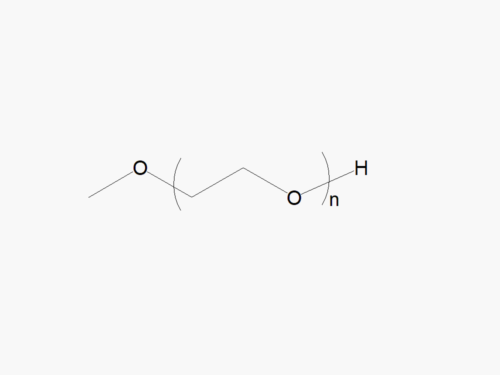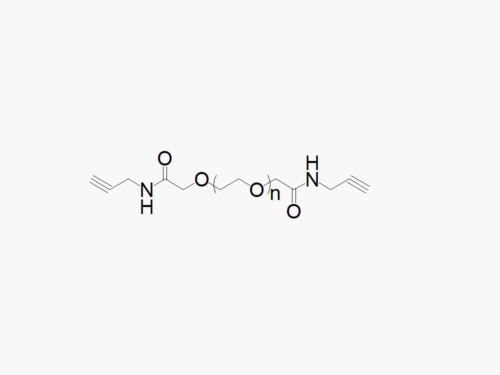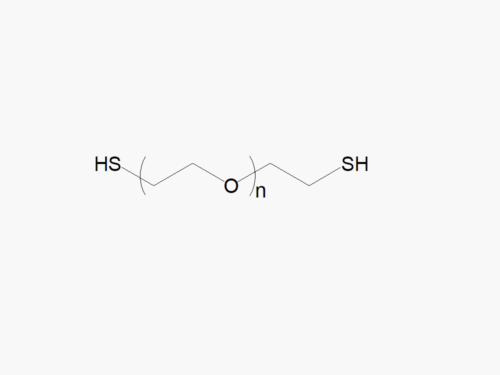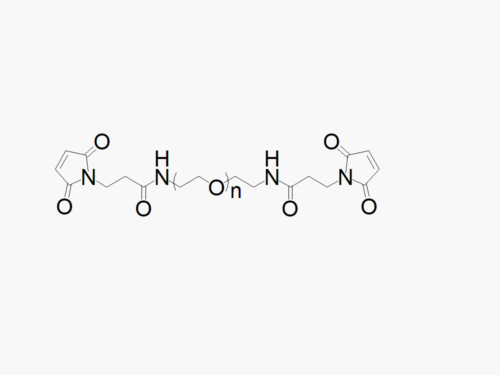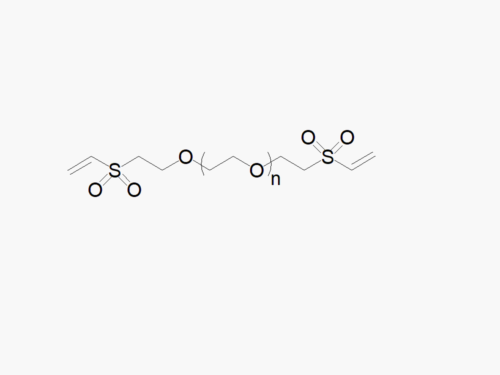PEG products with additional MW may be made to order, please contact us for details
PEG (Acrylate)2
$100.00 – $4,300.00
Description
PEG diAcrylate or PEG (Acrylate)2 reagent with superior quality specification of ≥95% Substitution.
PEG (Acrylate)2 from JenKem Technology (diAcrylate PEG) is a homobifunctional PEG employed for pegylation of sulfhydryl / thiol containing molecules. Acrylates are usually employed for vinyl polymerization or co-polymerization. JenKem Technology’s homobifunctional PEG derivatives have numerous applications as crosslinkers, including for PEGylation of proteins and peptides, nanoparticle and surface modifications. Conjugation with homobifunctional PEGs provides an increased drug load compared to pegylation using linear PEGs. JenKem Technology offers PEG (Acrylate)2 with MW 2,000 Da (ACLT-PEG2000-ACLT), MW 3,500 Da (ACLT-PEG3500-ACLT), MW 5,000 Da (ACLT-PEG5000-ACLT), and MW 7,500 Da (ACLT-PEG7500-ACLT), in 1g and 5g packing sizes; and ACLT-PEG35K-ACLT in 50g pack size.
Different MW of PEG diAcrylate may be available by custom synthesis, please email us at tech@jenkemusa.com for details on custom PEGs. JenKem Technology provides repackaging services for an additional fee, please contact us if you require a different package size than our catalog selection.
Bulk PEGs and GMP grade PEGs are made-to-order. Please contact us for bulk pricing.
References:
- Yu, T., et al., An injectable and self-healing hydrogel with dual physical crosslinking for in-situ bone formation, Materials Today Bio, 19, 2023.
- Huang, Y., et al., Structural aspects controlling the mechanical and biological properties of tough, double network hydrogels. Acta Biomaterialia. 2022.
- Nam, K, et al., Anisotropically Functionalized Aptamer-DNA Nanostructures for Enhanced Cell Proliferation and Target-Specific Adhesion in 3D Cell Cultures. Biomacromolecules. 2021.
- Peng, H, et al., Polymer Cell Surface Coating Enhances Mesenchymal Stem Cell Retention and Cardiac Protection. ACS Applied Bio Materials. 2021, 4(2):1655-67.
- Tan, JJ, et al., Investigating PEGDA and GelMA Microgel Models for Sustained 3D Heterotypic Dermal Papilla and Keratinocyte Co-Cultures. International Journal of Molecular Sciences. 2021, 22(4):2143.
- Chae, JJ, et al., Drug‐Free, Nonsurgical Reduction of Intraocular Pressure for Four Months after Suprachoroidal Injection of Hyaluronic Acid Hydrogel. Advanced Science. 2021; 8(2):2001908.
- Basara, G., et al., Electrically conductive 3D printed Ti3C2Tx MXene-PEG composite constructs for cardiac tissue engineering, Acta Biomaterialia, 2020.
- Marozas, I. A., et al., Adaptable boronate ester hydrogels with tunable viscoelastic spectra to probe timescale dependent mechanotransduction, Biomaterials, 2019, 223.
- Gottipati, A., et al., Gelatin Based Polymer Cell Coating Improves Bone Marrow-Derived Cell Retention in the Heart after Myocardial Infarction, Stem Cell Reviews and Reports, 2019.
- Day, J.R., et al., The impact of functional groups of poly(ethylene glycol) macromers on the physical properties of photo-polymerized hydrogels and the local inflammatory response in the host, Acta Biomaterialia, 2018, V. 67, P. 42-52.
- Tan, J.J., et al.,. Impact of substrate stiffness on dermal papilla aggregates in microgels, Biomaterials science, 2018.
- Jiang, Z., et al., A microfluidic-based cell encapsulation platform to achieve high long-term cell viability in photopolymerized PEGNB hydrogel microspheres. Journal of Materials Chemistry B, 2017, 5(1):173-80.
- Pedron, S., et al., Patterning Three-Dimensional Hydrogel Microenvironments Using Hyperbranched Polyglycerols for Independent Control of Mesh Size and Stiffness. Biomacromolecules, 2017, 18(4):1393-400.
- Acun, A., et al., Engineered Myocardium Model to Study the Roles of HIF-1α and HIF1A-AS1 in Paracrine-only Signaling under Pathological Level Oxidative Stress, Acta Biomaterialia, 2017.
- DiVito, K.A., et al., Data characterizing microfabricated human blood vessels created via hydrodynamic focusing, Data in Brief, 2017, 14, P. 156-162.
- Liang, Y., et al., Controlled release of an anthrax toxin-neutralizing antibody from hydrolytically degradable polyethylene glycol hydrogels, Journal of Biomedical Materials Research Part A, 2016, 104:1, p. 113–123.
- Feng, Q., et al., Mechanically Resilient, Injectable, and Bioadhesive Supramolecular Gelatin Hydrogels Crosslinked by Weak Host-Guest Interactions Assist Cell Infiltration and In Situ Tissue Regeneration, Biomaterials, 2016.
- Lilly, J.L., et al., Characterization of Molecular Transport in Ultrathin Hydrogel Coatings for Cellular Immunoprotection, Biomacromolecules, 2015, 16 (2), 541-549
- Hao, Y., et al., Visible Light Cured Thiol-Vinyl Hydrogels with Tunable Gelation and Degradation, Purdue University Library, 2014.
- Jing, P., In Vitro Hair Follicle Engineering, National University of Singapore, 2014.
- Pan, J., Fabrication of a 3D hair follicle-like hydrogel by soft lithography, J Biomed Mater Res Part A, 2013, 101(11):3159-69.
- Pedron, S., et al., Impact of the biophysical features of a 3D gelatin microenvironment on glioblastoma malignancy, J. Biomed. Mater. Res., 2013, 101 (12), p. 3404–3415.
Note: Starting July 2016, PEG (Acrylate)2 is the new name of the product Amine PEG Amine HCl salt (MW 2000 (NH2-PEG2000-NH2), MW 3500 (NH2-PEG3500-NH2), MW 5000 (NH2-PEG5000-NH2) and MW 7500 (NH2-PEG7500-NH2)).
Founded in 2001 by experts in PEG synthesis and PEGylation, JenKem Technology specializes exclusively in the development and manufacturing of high quality polyethylene glycol (PEG) products and derivatives, and related custom synthesis and PEGylation services. JenKem Technology is ISO 9001 and ISO 13485 certified, and adheres to ICH Q7A guidelines for GMP manufacture. The production of JenKem® PEGs is back-integrated to in-house polymerization from ethylene oxide, enabling facile traceability for regulated customers. JenKem Technology caters to the PEGylation needs of the pharmaceutical, biotechnology, medical device and diagnostics, and emerging chemical specialty markets, from laboratory scale through large commercial scale.


